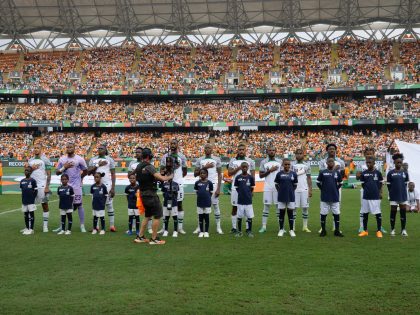Township Life Has Never Looked So Glam
Solange Knowles is the second major UK or American artist to shoot a music video in Cape Town in so many months.

Screen shot from Solange's music video for her singe, "Losing You."
We had forgotten about American singer Solange Knowles until The Fader shared her new music video (see below) for “Losing You,” calling it “a killer single.” The music video comes two weeks after another video by Swedish band Little Dragon surfaced on the web. Both videos were recorded in some of Cape Town’s townships. Where Little Dragon’s acoustic session is pretty dull (MTV disagrees) and the band doesn’t even seem to pretend they’re interested in their surroundings, Solange plays around, touring the unnamed township in the company of what appear to be a group of friends (whom she flew down) and an oddly out-of-place group of Sapeurs (it’s not clear whether she flew them down too from Brazzaville or Kinshasa).
Here’s the video:
In an interview, Solange explicitly refers to the work that Italian photographer Daniele Tamagni did on Sapeurs (“Gentlemen of Bacongo’) as an inspiration for the styling of the video. Tamagni is one among many photographers who swarmed to Brazzaville and Kinshasa some years ago to shoot the Congolese life-style phenomenon. Remember the work of Héctor Mediavilla Sabaté, Baudouin Mouanda and Francesco Giusti for example. Somehow, these kind of photo series on one and the same topic always appear to come in waves. Think also of that bulk of features on Congolese wrestling from around the same time, or in a different context, those on poor white South Africans. One photographer “discovers” a subject, others will quickly follow, and, with some delay, you’ll see the imagery start to circulate in other popular media. It’s what pop is about. (Side note: when will this grittier look on Sapeurs go viral?)
But back to the Solange’s music video. As has become custom around Africa is a Country, we decided to solicit opinion from around the “office.”
Marian Counihan: Township life has never looked so glam. In some ways it feels cheap, it’s like the (re)discovery of the ghetto — but now it’s slightly exotic, and so fresh again. Solange is a bit of a fish out of water (at some points moving like one too). But it’s a nice track, and it’s refreshing to see Africa filmed in a slightly faded pallette instead of the oversaturated one we’re used to — and it’s one that accurately conveys Cape Town’s Africa-for-Europeans feel.
Sean Jacobs: Unless Solange is making a political statement (I am being generous) about xenophobia and panafricanism (by featuring Sapeurs in a video filmed in a South African township). But we know that Cape Town was merely a stand-in. I can’t make out the mix of images and references (especially of the Sapeurs). Otherwise it looks like a series of images patched together. For the Cape Town people: It looks like it was filmed either in Langa or Philippi?
Marissa Moorman: Indeed, it’s hard not to read this as part of the “Come Film in Cape Town” trend. The Little Dragon video at least has some sonic interaction, if no physical movement around the space … but both videos just use these neighborhoods as background, as periphery ghetto chic.
Wills Glasspiegel: I like the tune, love Blood Orange. Seems like Solange should work with Boima at some point, too. The dancing looks a bit off in terms of how it was edited to the music. For some more background re: Solange and the continent, I co-shot this video that she sang on once for a project she was doing for Coke’s clean water campaign in Kenya with Chris Taylor from Grizzly Bear.
Palika Makam: Visually, the video is interesting and I enjoy it — the subdued colors, the fashion, the direction. She worked with Mickalene Thomas, a Brooklyn artist who I’ve actually interviewed for Life and Times before, a site started by Jay Z. The collaboration makes sense since it is her brother-in-law’s website. Mickalene’s work tends to have strong blaxploitation themes and specific pattern choices and color palette — all which you can see in the video. In terms of the content, the location and concept for the video make no sense and have nothing to do with the song. There’s also been some controversy over why she chose to feature those Sapeurs from Congo instead of Cape Town’s Swenkas. I don’t understand why she couldn’t disclose the location. Instead of situating the story and characters within a particular place of importance, the streets and shacks are just a representation of “Africa” or “poverty,” with no real identity.
Marissa Moorman: One of the interesting bits in the Fader interview is the fact that Solange originally wanted to film in Brazzaville but was discouraged because of the cost, ‘drawing too much attention,’ and ‘insurance issues.’ Cape Town makes it easy to film there. US citizens don’t even need visas, so boom — there they go. There is actually something called political risk and insurers have actuarials for this kind of thing. So filming this kind of video is wrapped up in a politics of stabilization — and South Africa trades repeatedly on its relatively sounder stability. And that just bugs me at some level. It disappears in all the flyness of the duds.



















